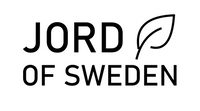Is bamboo sustainable?

Bamboo, the plant? Yes, it is sustainable. Bamboo fabrics? Then the most honest answer is that it depends on how the bamboo material is processed and handled through its value chain. Because there are many materials made from bamboo, and we can’t cover them all here, we will narrow our discussion to bamboo textiles or fabrics.
The first step in bringing bamboo textiles to your door is to grow bamboo. This step is certainly very environmentally friendly. Bamboo grows to full size in 3 to 4 months without any fertilizer or pesticide. No irrigation is needed, as with other plants, such as cotton.

Bamboo is then harvested. This is labor intensive, and many communities depend on bamboo to support themselves. The environmental aspects of sustainability is not at risk. Once cut, bamboo will grow again from the remaining plant, so no replanting is needed. This is great for the soil and the fauna living underground. When it comes to the social component of sustainability, one has to make sure no child or forced labor is used in the harvesting of bamboo.
To produce textiles, bamboo fibers are needed. There are two main processes to obtain such fibers. One is mechanical, the other is chemical. Because bamboo contains cellulose, one could process bamboo chemically, to make rayon or viscose. It can be argued that bamboo rayon or bamboo viscose is more sustainable than other cellulosic raw materials. However, because both the rayon and viscose processes require the use of chemicals, the drinking water of communities living downstream could be contaminated. The chemical route for bamboo processing not only exposes communities living near bamboo forests to unnecessary chemicals, but traces of these chemicals will also be carried with the rayon and viscose, eventually exposing your skin and home environment to them.
A far more sustainable way to separate the bamboo fibers is by mechanically processing it. Some may say that processing bamboo mechanically is not economically viable. That is only true if one disregards the cost of cleaning the water that becomes contaminated when processing it chemically, and guess what? In most places where bamboo is chemically processed, the high-pH, contaminated water is poured untreated into the environment. That makes for cheap bamboo and the resulting rayon and viscose ends up as part of low-value garments or in great economic profit for those who pretend it’s sustainable. The only valid argument is that even the chemical route for bamboo rayon and bamboo viscose is probably more sustainable than any cotton alternative.
From this step onwards, the major impact to the environment is the transportation, which would be similar regardless of the quality and processing route.
Based on this we have chosen to only provide mechanically produced bamboo fabrics that are Oeko-Tex® standard 100 certified.






Leave a comment